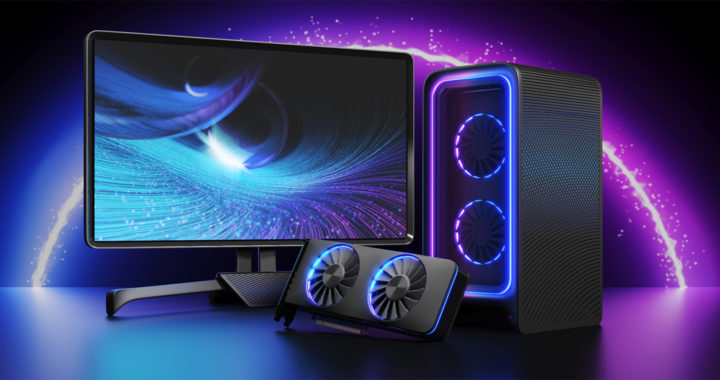The first graphic processors introduced under the Intel Arc line in 2022 are the Intel Arc A750 and Intel Arc A770. These hardware products are specifically under the Intel Arc A-Series of GPUs for desktop computers that are marketed for high-performance gaming and content creation. They also compete against higher-end graphic processors from Nvidia and AMD but are priced for the mid-range discrete graphics processor segment.
Intel Arc A750 vs Intel Arc A770: A Comparison of Specifications, Features, and Performance
Nevertheless, considering the arrival of these graphic processors in the discrete graphics processor market, choosing between the two can be confusing for some because of their shared similarities and general performance capabilities. There are still some notable differences between the two. The following highlights the critical similarities and differences between the Intel Arc A750 and Intel Arc A770:
Similarities Between the Intel Arc A 7 Graphics Processors
One of the most important similarities between Intel Arc A750 and Intel Arc A770 is that both are discrete graphics processors based on the Intel Alchemist or Intel Arc 7 generation of the overall Intel Arc A-Series. This generation of graphic processors is developed for competitive personal computer gaming and professional-grade content creation.
The specific semiconductors of these GPUs are also manufactured using the 6nm process technology of TSMC. This provides higher transistor density that translates to better theoretical performance and power efficiency than the 7nm process used in graphics processors such as the AMD Radeon RX 5000 series and Nvidia GeForce RTX 30 series.
Intel Arc 7 generation is also based on the Intel Xe graphics processor microarchitecture or the more specific Xe-HPG variant for high-performance graphics. This means that both the Arc A750 and Arc A770 support hardware-accelerated ray tracing, DisplayPort 2.0 interfacing, DirectX 12 Ultimate, and XeSS neural network supersampling,
The XeSS tech takes advantage of AI hardware acceleration to boost graphics processing performance. These GPUs also support other graphics technologies such as variable rate shading, mesh shading, and sampler feedback. There is also support for AV1 encoding. Both enable Intel Deep Link for efficient power-sharing with Intel Core processors.
Key Differences Based on Specifications and Performance
A main difference between Intel Arc A750 and Intel Arc A770 is price. The Arc 750 was priced at USD 289.00 at launch while the Arc A770 was priced between USD 329.00 and USD 349.00. The prices have gone done and both are still considered more affordable than high-tier and flagship discrete graphics processors from Nvidia and AMD.
The price difference between the two GPUs from Intel comes from their different technical specifications and performance capabilities. The Arc A750 has 8GB video RAM while the Arc A770 is available in 8GB and 16GB video RAM variations. The 16GB Arc A770 has a higher memory bandwidth of 560 Gbps and a memory speed of 17.5 Gbps.
Arc A770 has 2100 MHz clock speed, 32 ray tracing cores, 4096 shading units, 8 render slices, 512 Xe Matrix Extension or tensor cores, and 512 Xe Vector Engines or execution units. Arc A750 has 2050 MHz clock speed, 28 ray tracing cores, 3584 shading units, 7 render slices, 448 Matrix Extension Engines or tensor cores, and 448 Vector Engines or execution units.
Nevertheless, when it comes to performance, Intel Arc A770 has a 9 percent higher effective speed and 12 percent higher render score than Intel Arc A750 based on benchmark test scores. The A770 also has a pixel rate of 307.2 GPixel/s and a texture rate of 614.4 GTexel/s compared to the 268.8 GPixel/s and 537.6 GTexel/s of the A750.
Main Takeaway: A Comparison of the Capabilities, Similarities, and Differences Between Intel Arc A750 vs Intel Arc A770
The better technical specification of the Intel Arc A770 gives it an advantage over the Intel Arc 750. However, based on performance testing, the performance gap between the two is small and even negligible based on available benchmark test results and general real-world applications. Choosing the A770 makes sense for consumers who want to maximize the graphics processing capabilities of an Intel Arc 7 graphics processor.
However, because of the price tag of Intel Arc A770, it does not provide a compelling selling point because there are other high-performing graphics processors at a similar price range such as NVIDIA GeForce RTX 3060 and the AMD Radeon RX 6600. The Intel Arc A750 provides a better value because of its better performance-to-price ratio compared to its mid-range counterparts from Nvidia which sell at higher price tags.

